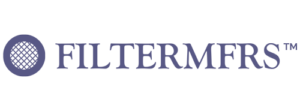Optimizing Perforation Patterns for Efficient Drain Covers
The perforation pattern of the stainless steel plate affects the efficiency and functionality of the drain cover. These patterns, created through precise CNC (computer numerical control) perforation techniques, determine the drainage efficiency, strength, and durability of the covers. Optimizing these patterns involves a deep understanding of the application requirements, material properties, and manufacturing capabilities.
Importance of Perforation Patterns
Perforation patterns are essential for various reasons:
- Drainage Efficiency: The primary function of a floor drain cover is to allow water to pass through while preventing debris from entering the drainage system. The perforation pattern must balance open area and structural integrity to achieve optimal drainage efficiency.
- Strength and Durability: The pattern must ensure that the cover remains strong and durable under various loads and environmental conditions. This is particularly important in high-traffic areas and industrial settings.
- Aesthetic Appeal: In addition to functionality, the design of the perforation pattern can contribute to the aesthetic appeal of the floor drain cover, especially in architectural applications.
Types of Perforation Patterns
Several common perforation patterns are used in the manufacturing of stainless steel floor drain covers:
- Round Holes: The most common and versatile pattern. Round holes provide a good balance between open area and structural strength. They are suitable for general-purpose applications.
- Square Holes: These offer a modern look and are often used where a higher open area is required. However, they may compromise some strength compared to round holes.
- Slotted Holes: Ideal for applications requiring directional flow. Slots can be oriented to control the flow of water and debris.
- Custom Patterns: Advanced CNC technology allows for the creation of custom patterns tailored to specific needs, such as logo incorporation or unique design elements.
Factors Influencing Pattern Optimization
Optimizing perforation patterns involves considering several factors:
Open Area Ratio
The open area ratio reflects how much of a perforated sheet consists of holes compared to the total sheet area, typically expressed as a percentage. For instance, a 30% open area means 30% of the sheet is holes while 70% is solid material.
To calculate the open area:
Round Holes (60° Staggered)
Open Area Ratio = (D² x 90.69 / C²)%
- D: Hole diameter
- C: Center-to-center distance between holes
Round Holes (Straight Line)
Open Area Ratio = (D² x 78.5 / C₁C₂) %
- D: Hole diameter
- C₁, C₂: Center-to-center distances in x and y directions
Square Holes (Straight Line)
Open Area Ratio = (S²x 100 / C₁C₂)%
- S: Side length of the square hole
- C₁C₂: Center-to-center distances in x and y directions
Optimizing the open area involves balancing drainage efficiency with structural integrity. Higher open areas improve drainage but can weaken the sheet. The ideal ratio depends on application-specific requirements, considering factors such as load-bearing capacity and environmental conditions.
For detailed calculation methods of Open Area Ratio, please read this article:
- How to Calculate Perforated Metal Sheet Open Area?
Hole Size and Spacing
The size and spacing of the perforations must be carefully designed to balance drainage efficiency and structural integrity. Smaller holes provide better debris filtration, while larger holes increase water flow.
Material Thickness
Thicker materials can support larger holes and higher open areas without compromising strength. The material’s properties also influence the choice of perforation pattern.
Load Requirements
The expected load on the floor drain cover, including foot traffic and equipment weight, affects the choice of pattern. High-load applications require stronger, more supportive patterns.
Environmental Conditions
Corrosive environments or areas with high chemical exposure may require specific materials and perforation designs to ensure longevity and performance.
CNC Technology in Pattern Optimization
CNC technology is instrumental in optimizing perforation patterns for floor drain covers. It allows for:
- Precision: CNC machines provide high precision, ensuring that each perforation is accurately placed according to the design specifications. This precision results in consistent and reliable drain covers.
- Customization: CNC technology enables the creation of custom patterns tailored to specific applications. Designers can experiment with different patterns to find the optimal solution for their needs.
- Efficiency: Automated CNC processes increase production efficiency, reducing time and costs. This efficiency makes it feasible to produce high-quality, customized drain covers at scale.

Case Studies and Real-World Examples
Real-world examples highlight the importance of optimizing perforation patterns:
- Industrial Settings: In factories and warehouses, floor drain covers with optimized perforation patterns handle heavy loads while ensuring efficient drainage. Custom patterns are often used to address specific debris and liquid flow requirements.
- Commercial Kitchens: Drain covers in commercial kitchens need to efficiently handle water and food waste. Perforation patterns are optimized to prevent clogging and ensure easy cleaning and maintenance.
- Public Spaces: In public spaces like parks and plazas, aesthetic appeal is as important as functionality. Custom perforation patterns provide a visually pleasing design while maintaining drainage efficiency and strength.
Future Trends in Perforation Pattern Optimization
The future of perforation pattern optimization looks promising, driven by advancements in technology and materials:
- Smart Materials: The development of smart materials that respond to environmental changes could lead to adaptive perforation patterns, enhancing drainage efficiency and durability.
- 3D Printing: Advances in 3D printing technology may allow for more complex and intricate perforation patterns that were previously impossible to achieve with traditional methods.
- Sustainability: Sustainable manufacturing practices and materials will continue to influence the design and production of perforated drain covers, promoting eco-friendly solutions.
Conclusion
Optimizing perforation patterns for efficient floor drain covers involves a comprehensive understanding of material properties, application requirements, and manufacturing capabilities. CNC technology plays a pivotal role in achieving precision, customization, and efficiency in perforation pattern design. By balancing factors such as open area ratio, hole size and spacing, material thickness, and load requirements, manufacturers can create drain covers that meet the highest standards of performance and aesthetics. The ongoing advancements in technology and materials promise exciting developments in the future, ensuring that perforated drain covers continue to evolve and improve.







